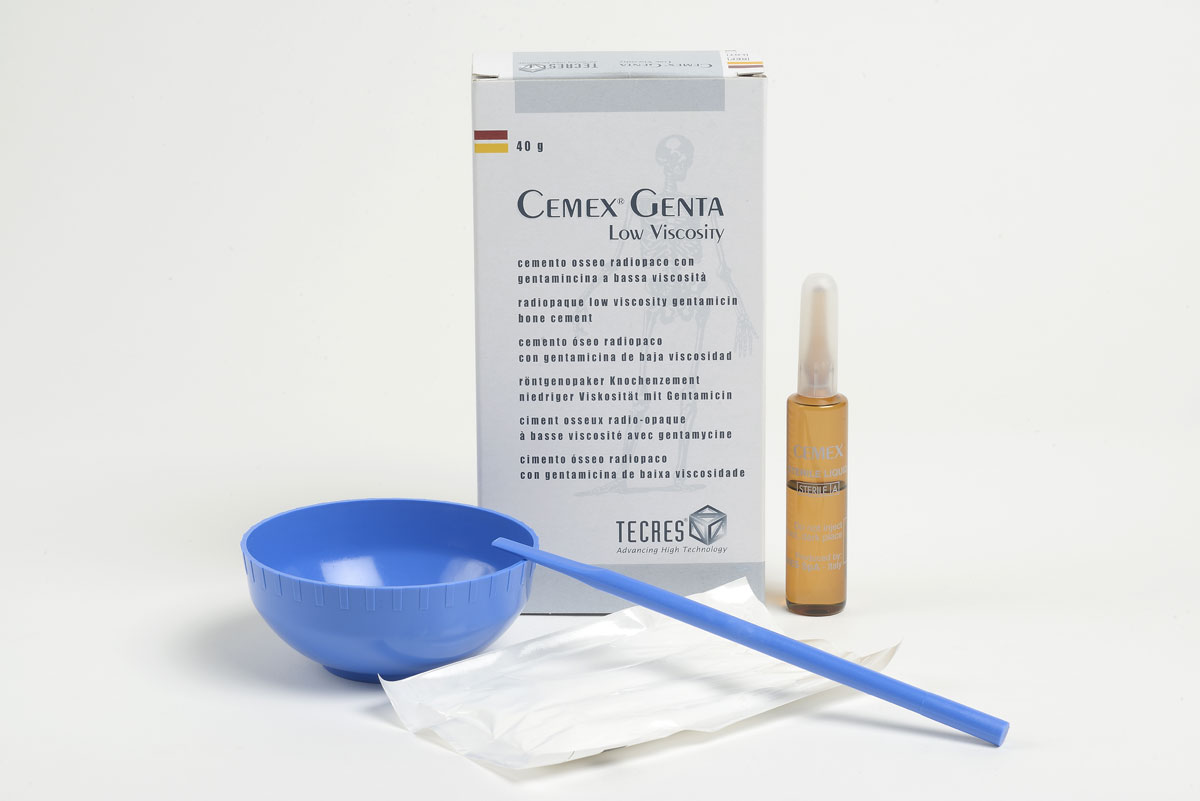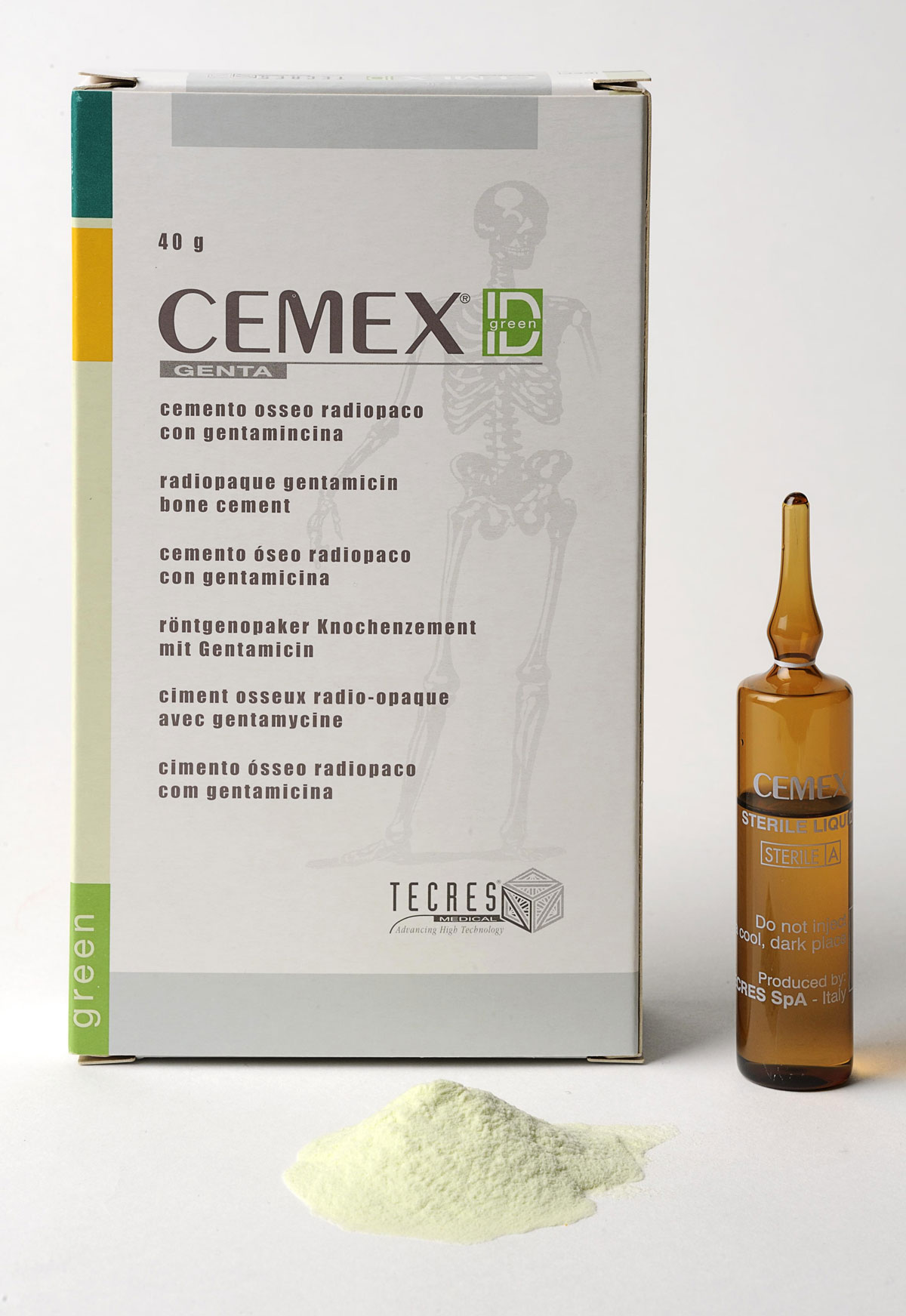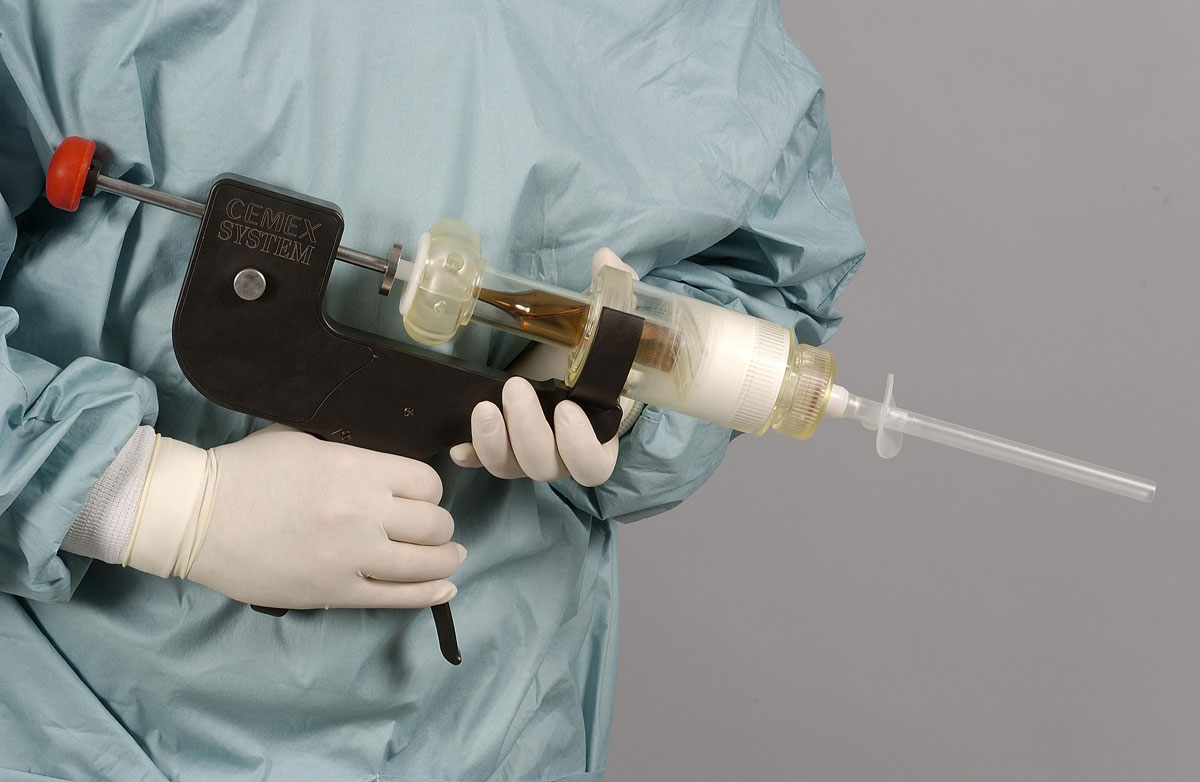Каталог
Tecres has always focused on the research and development of bone cement.
We invented Cemex, a revolutionary bone cement. By introducing the 3:1 powder and liquid mixing proportions, we were the first ever in the O.R. to supply a less toxic bone cement with a lower polymerisation temperature and extremely low porosity. This was followed by Cemex System, another revolution for cementing systems. A unique, completely enclosed and odourless system, with pre-dosed liquid and powder components alongside all the advantages of Cemex bone cement.
We now proudly present AM-Mixer 01, yet another revolution in cementing procedures: a completely automated bone cement mixing system with also all the advantages of Cemex and Cemex System.
Tecres is the acknowledged landmark for progress in the bone cement field.
Security and reliability
Cemex cement has an extremely reduced quantity of air, since it contains less liquid. The result is an extremely compact mixture. Many tests carried out in various laboratories all over the world (Njimegen, Rizzoli, etc.) have shown its advanced mechanical performance. In addition, Cemex has been used in clinical practices for over 20 years which confirms that it is perfectly safe and efficient.
Reduced toxicity
Due to the 3:1 ratio between powder and liquid the cement’s formula has a reduced quantity of liquid which determines a reduced release of monomer to the patient during the implant. This condition reduces the risk of inconveniences related to liquid toxicity.
Low polymerization temperature
Due to the 3:1 ratio between powder and liquid the cement’s formula has a reduced quantity of liquid which determines a reduced polymerization temperature. Each gram of liquid develops 130 cal. A reduced quantity of Cemex also reduces the presence of bone necrosis caused by heat.
Minor Shrinkage
hrinkage is the reduction of the cement volume following polymerization. It is directly proportional to the quantity of liquid contained in the cement. If there is less liquid there will be a minor shrinkage and an improved fixing capacity of the implant.




